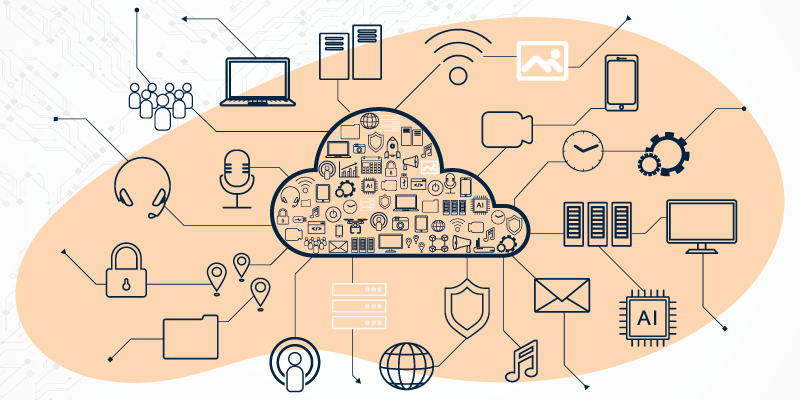Ever wondered if your favorite streaming or gaming platform could be obliterated by a simple cloud outage? Truth be told, it’s not just a possibility — it’s a reality. The race for superiority in the realm of cloud computing is intense, as Azure, AWS, and Google Cloud contend for dominance. As we delve into the intricate world of cloud computing, be prepared to uncover some interesting secrets these cloud giants have in store. Let’s unravel the mysteries of Azure, AWS, and Google Cloud, exposing the true powerhouses behind the virtual curtain.
Azure: Microsoft’s Mighty Cloud
Azure, Microsoft’s creation, boasts an impressive array of services. Did you know that Azure was initially called “Project Red Dog”? Believe it or not, It’s true! The name was inspired by the beloved pet of one of the engineers. Azure’s roots go deep, stemming from Microsoft’s own necessity to turn towards cloud-based services in the mid-2000s.
Azure Functions, Microsoft’s serverless computing service, allows developers to focus solely on writing code without worrying about infrastructure management. This streamlined approach accelerates development and enables rapid scaling based on demand.
When Pokémon GO took the world by storm, Azure became an integral component. The game’s unprecedented success led to massive traffic spikes. As a result, Niantic, the developer, turned to Azure for its scalability, ensuring uninterrupted gameplay for millions of users worldwide.
AWS: The Pioneer of Cloud Computing
Amazon Web Services (AWS) pioneered cloud computing as we know it today. But did you know that AWS began as an internal infrastructure project to support Amazon’s e-commerce platform? Its public launch in 2006 marked the beginning of a revolution in IT infrastructure.
AWS Lambda, AWS’s serverless computing platform, enables developers to run code in response to events without provisioning or managing servers. This event-driven architecture simplifies development and reduces operational overhead, allowing for greater agility and scalability
For example, Netflix, the video streaming giant, relies heavily on AWS. During peak hours, Netflix accounts for a significant portion of global internet traffic. As such, AWS’s robust infrastructure ensures seamless streaming, even during peak times like weekends and holidays.
Loading Data from S3 to Snowflake Data Warehouse
When it comes to data engineering, efficient data loading processes are essential for maintaining the agility and scalability of modern data architectures. With the promotion of cloud services like AWS and Snowflake, companies are increasingly adopting event-driven architectures coupled with serverless computing paradigms to streamline data ingestion workflows.
Lambda functions, AWS’s serverless compute service, offer a powerful solution for executing code in response to events, such as changes to data in an S3 bucket. When combined with an event-driven architecture, Lambda functions provide an agile and scalable approach to loading data from S3 into Snowflake, a cloud-based data warehousing solution known for its performance and concurrency capabilities.

Google Cloud: The Innovator’s Choice
Lastly, Google Cloud, the youngest of the trio, is no newcomer to innovation. While Google is predominantly known for its search engine, its cloud services are equally important. Google Cloud’s secret tool? TensorFlow, an open-source machine learning framework that empowers developers to build powerful AI applications with ease.
Google Cloud Functions, Google’s serverless compute service, allows developers to build and deploy applications in a serverless environment. With support for multiple programming languages and seamless integration with other Google Cloud services, programmers can focus on writing code and delivering value without managing infrastructure.
Spotify is one of the streaming giants that leverages Google Cloud’s infrastructure to deliver a personalized music experience to millions of users worldwide. By harnessing Google’s data analytics capabilities, Spotify analyzes user preferences in real-time, creating playlists tailored to individual tastes
Tip for Developers
Embrace multi-cloud architecture. This is valuable advice our DevOps engineer Stevan has for all of his fellow colleagues. Why? Well, each cloud provider offers unique strengths, but relying on a single provider can be risky. By adopting a multi-cloud strategy, you mitigate the risk of vendor lock-in and gain access to a wider range of available services.
Cloud Computing: A Summary
All in all, choosing the right cloud provider comes down to your specific needs and preferences. Azure, AWS, and Google Cloud each have their strengths and weaknesses, but all three offer robust solutions for modern businesses. Whether you’re a startup looking to scale rapidly or a seasoned company seeking innovation, the cloud awaits with endless possibilities
If you need expert help, feel free to contact us, and one of our DevOps engineers will provide you with insight regarding your specific business operations and goals. So, dare to dream, and let the clouds carry you to new heights of success.